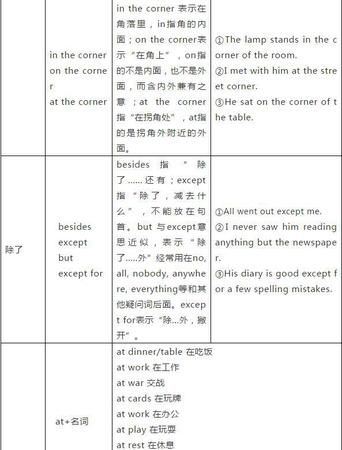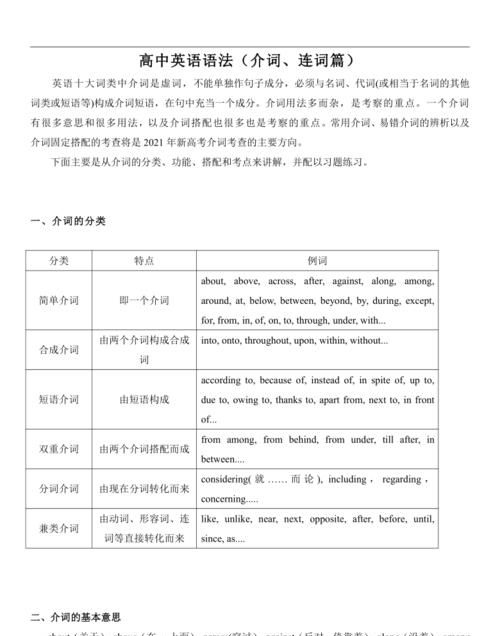本文目录
高中英语教案模板范文
英语 快速阅读 的培养不可能一天就学会和掌握,必须有一个循序渐进的过程。本文的出发点在于平时学习过程中的培养和训练,才能在考试过程中发挥得淋漓尽致,达到满意的效果。因此,在日常学习中,要有意识地按照精英特快速阅读的要求进行大量的训练,制定出计划和严格的要求,一步一个脚印地进行。只要持之以恒,必然会见效。接下来是我为大家整理的2020高中英语教案 范文 ,希望大家喜欢!
2020高中英语教案范文一
《Unit 3 A taste of English humour》
教学准备
教学目标
Teaching Objectives
1. Students are able to learn more about nonverbal humour as well as Charlie Chaplin through network-based.
2. Students are able to get the gen eral idea and detailed information of the passage by skimming, scanning as well as interpreta tion and appreciation.
3. Students will learn to face difficulties in life with optimism and humour as well as learn to cooperate with others in groups.
教学重难点
Teaching difficult points
1. How to guide students to search for and sort out related information according to the assigned task through the Internet.
2. How to cu ltivate students’ learning ability through teamwork based on network.
Teaching important points
1. Help students to get the general idea and detailed information of the text effectively by skimming and scanning.
2. Help students to analyze the reasons for Charlie Chaplin’s success by interpreting the key sentences and get them inspired.
教学过程
Step 1
Lead-in(3 mins)
1.Students’ Activities:
2.The Purpose of Activities
Students are to appreciate a video clip performed by Mr. Bean.
Students will be guided to acquire the form of nonverbal humour in a vivid way,
thus eage r to learn about the main character of the text with interest.
Step 2
Network-based Interactive Learning(25 mins)
1.Students’ Activities
(1).Students are divided into five groups to search for and sorted out the related information according to the assigned task online
(2)A representative of each group is to share the information with the others.
2.the Purpose of Activities
Students will develop their ability to effectively sort out information on the Internet throug h group cooperation as well as feel a sense of achievement by their oral presentation.
Step3 Text-based Reading(17 mins)
Students’ Activities 1. Students are to read the text quickly, and then answer the questions according to the text. 2. Read Paragraph 3 carefully, and then answer the question ---Why did “the little tramp”become Charlie Chaplin’ famous character ?3. Read Paragraph 4 and fill in the blanks
。4. Find out the sentences that can account for Charlie Chaplin’s success from the text.
2.The Purpose of Activities
(1)Students will get the general idea as well as the structu re of the text by skimming.
(2)Students will get the detailed information and have a deeper understanding of the text.
(3) Students will get inspired while analyzing the secret to Charlie Chaplin’s success by interpre ting and appreciating some key sentences in the text.
课后习题
Step 5 Homework
1. Students are to read the text carefully again and underline the phrases and sentences difficult to understand after class.
2. Write a summary (about 130 words).
2020高中英语教案范文二
教学准备
教学目标
1. 通过学生分享自己的旅游经历,用英语进行交流与表达。
2. 通过略读与找读,使学生获取 文章 主要信息,练习阅读技巧。
3. 通过小组讨论为旅游准备的物品,使学生用英语简单的语言实践活动。
教学重难点
教学重点:利用阅读技巧,获取文章大意及细节
教学难点:用英语交流并进行简单实践活动—旅游需要准备的物品
教学过程
I、Warming Up:
1. I’d like to share my travelling experience with you, and would you like to share your travelling experience?
2. The world has many great rivers. Have you been to these rivers?
设计意图:大部分学生都喜欢旅游,老师谈谈自己旅游的经历,询问学生的旅游经历。列举世界上的河流图片,让学生来欣赏认识美好的河流。能有效地调动学生的学习积极性。河流图片的展示,学生猜测河流的名字,唤起学生的学习兴趣以及对大自然的热爱。
II. Pre-reading
Have you been to the Mekong River? What countries does the Mekong River flow through?
设计意图:展示沿湄公河的地图,引起学生的兴趣,让学生观察地图,说出湄公河流经的国家,为随后的阅读做好了内容和词汇上的铺垫。
III. Reading
1. Skimming
Skim the passage and find the main idea for each paragraph
Para 1: Dream
Para 2: A stubborn sister
Para 3: Preparation
设计意图: 略读:学生快速浏览课文,寻找相关信息并搭配段落大意。点拨阅读技巧:注意每段开头及结尾。
2. Scanning
1). Read Para 1 and find the key word for the information:
Who and What
Where and How
Why and When
设计意图:1.寻找who,what,where,how,why and when等关键信息,让学生把握这类 记叙文 的阅读要点。2. 根据图表复述,练习学生语言整合与连贯的能力。
2). Please use at least three adjectives to describe Wang Wei according to Para2, and give your reasons.
设计意图:研读课文第二段,思考至少3个形容词来描写王薇,并利用文章说出依据,目的是让学生研读,并挖掘支持自己观点的信息。
3). Read 3 and answer: what can they see along the Mekong River?
Suppose you are a tourist guide, please introduce the Mekong River briefly to your audience.
设计意图:先让学生从文中找到表示地貌的地理术语,利用形象生动的幻灯片,为学生扫清生词及读音障碍,然后让学生扮演导游的角色,结合示意图向游客介绍湄公河,从而达到复述的目的。
IV. Group work
Imagine that you are preparing for your own trip down the Mekong. In your groups of four: choose 5 things that you think are the most useful, and give your reasons why you choose them.
设计思路:读后讨论,学生想象去湄公河前必备的5件物品,并说明选择的理由。为学生准备地图,收音机,毯子,水杯,救生圈,雨伞,火柴,手机,照相机,药物,防晒霜等,学生小组讨论,并用英语表达个人看法与观点。
V. Summary
What have we learned in this class?
设计思路:引导学生 反思 本节课主要内容及重难点。
课后习题
Homework
1. Read the passage as fluently as possible after class.
2. Preview Learning about Language.
板书
板书设计:
Unit 3 Travel Journal
Part 1 The dream and the plan
careless waterfall
determined entire
excited view
crazy
stubborn
risk-taking
2020高中英语教案范文三
一、案例实施背景
任何语言的习得和学习都离不开大量阅读的实践。许多教师也意识到高中阅读对于学生综合语言能力培养的重要性,用尽各种办法来培养学生的阅读微技能。当然这样做的目的确实也提高了学生测试性阅读的能力。如阅读前讲解重点生词或词组,阅读中找main idea, 设计不同程度的问题帮助不同层次学生理解阅读,呈现表格,运用复述,角色扮演,采访等不同形式来开展阅读任务。以上虽均衡了话题及功能两方面,但这些 方法 仍只停留在字,词,句及其他细节的表层理解上。要想真正让学生内化阅读材料,除了表层的理解外,阅读也要关注语言文字背后的深层理解和 文化 内涵。这点我们可以从 语文学习 上得到启示。《英语新课程标准》就阅读的知识性和欣赏性上提出了指导思想:语言有丰富的文化内涵。 英语学习 就是要关注说英语国家的历史地理、风土人情、传统习俗、生活方式、文学艺术、行为规范、价值观念等,从而加深对世界文化的理解。因此,笔者认为高中 英语阅读 课除了训练测试性阅读之外,需要大量的欣赏性阅读材料来补充教学。教师应该冲破词汇,语法的束缚,在阅读中突出技能渗透的同时,应将课文阅读教学提高到欣赏性阅读的美学高度,真正培养他们的英语学习兴趣。
二、教学内容分析
教学内容为高一NSEFC Book 1 Unit 4的reading task。作为地震内容的阅读补充材料,它是作家Jack London的笔下之作。以一个目击者的身份,介绍了旧金山大地震的所见所闻所感。语言地道优美,描述性较强。重点是欣赏阅读中训练略读和查读两大阅读微技能,逐步加深对旧金山地震及细节理解,并对地震中发生的一切形成自己的观点看法和情感态度,体会人们地震后表现出来的勇敢精神。本课难点是如何引导学生paraphrase 课文中的几个 句子 如A list of the brave men and women would fill a library. A list of buildings undestroyed was now only a few addresses.
三、学生分析
教学对象为高一学生,他们的认知能力较初中学生有了一定的发展,有着更强的求知欲。不满足单一的课本教材学习,具备对于兴趣的话题会去网上搜索知识来获得信息的能力。半个学期的英语教学已经让他们意识到高中英语阅读不同于初中的手把手阅读,更多的是他们自主思考,对疑惑提出自己的观点和见解。本次欣赏性阅读材料是美国文学原著,他们也是第一次碰到,有些句子理解上比较难,注意给学生学法上的指导。另外为了帮助学生逐层进行理解课文,设计的问题一定要考虑到不同学生的认知识水平,注意因材施教。
四、案例实施过程
(一) warming-up引入
1.教师用播放San Francisco的音乐录音,让学生带着问题what is the song about? 去欣赏.
( Now listen to an English song.. After listening, tell me What the song is about)
2.然后问问题:
What country is it in? In what part of the country does it lie?
PPT呈现一张地球板块分布图,并让学生说出旧金山位于哪两个板块交界处。(San Francisco lies where the American plate and pacific plate meet. The two jump and an earthquake may be felt)
教师自然引入:This was just what happened in 1906.
由于学生刚学过唐山大地震的相关知识,了解板块运动会引起地震,图片即或学生原由有背景知识,为下文的阅读做好铺垫。
(二)pre-reading:预测全文。
浏览题目 the story of an eyewitness呈现两个问题帮助学生预测大意。
Q1: What does an eyewitness mean? Q2: If you were an eyewitness, what would you see and hear during the earthquake?
播放一短视频让学生用几个句子来描述所见所闻。
学生一般都这样描述: The world was at an end! The bridges cracked and broke; the people were killed; buildings were destroyed…The houses were shaking and then the buildings collapsed and were destroyed; Everything was in ruins…..
predicting是一项重要的阅读微技能,目的是让学生猜测文章可能会讲什么。提前预测能够更快激活学生脑中原有的图式,帮助学生更快建构新的知识体系。唐山大地震的学习学生已经对地震前,中,后发生的有所了解,让学生用句子或小篇来描述所见所闻符合有效的输入---输出的英语学习规律。当然直观的视频教学也更能激发学生说的兴趣。这环节目的也是为了让学生更快地找到作者在旧金山地震中的所见所闻。
(三)Skimming
Q: What did the author see and hear? 划出作者的所见所闻句子。
Skimming是训练学生迅速获取文章大意或中心思想的一种阅读能力。本文的中心就是地震后的所见所闻,引导学生可跳过某些细节,围绕问题,加快阅读速度。在阅读时,有意识地引导读读段落的段首或段尾。该环节目的就是让学生熟悉如何进行略读。
(四)Scanning
Q1: Can you find an adj to describe how the author felt about the earthquake? Why?
Q2: Can you find an adj to describe how the people felt about the earthquake? Why?
Scanning称扫读或寻读。目的是找出某些特定信息或回答阅读理解题所需要的事实及依据。在对通篇文章疏而不漏的快速扫描中,迅速定位信息点,而和内容无关或关系不大的部分则可一带而过。该阅读材料文学性强,所描述的细节也很多,学生很难以找出一主线去分析地震景象。以上的两个问题解决了这一教学难点。这两个问题十分有效地让学生去思考人们在震中和震后的感受。通过第一个班的教学,笔者发现可以先将Q2提前解决。因为学生很快就能说出人们的感受。They are kind, sad…教师顺势抓住学生的思维,马上问Why?
Can you find some sentences to support your opinion? 进一步提升问题的本质,启发学生的思维,学生很快也能找到支撑的信息:They helped one another climb the high hills around the city. Never in all San Francisco’s history were her people so kind as on that terrible night. 第二个班级教学中说到人们为什么很悲伤难过,学生的兴趣一下子被激发出来。有人说他们失去了家人,亲人,朋友;有人说他们失去了房子,无家可归;由于课文中的一句话还能证明他们可能会由于失去财产和至爱而悲伤。我也趁机问学生:What can you conclude from the sentence?
“whole families put everything they owned and could save into wagon” 引导学生这样思考they may lose possessions and beloved ones so they are very sad.然后问学生what do you think of the earthquake?你能在文中找出几个形容词来描述么?其实这也就回答了第一个问题。在这整个过程中,教师起到的作用是组织,参与和引导,重视了学生在学习中的主体能动作用。
(五)Careful Appreciation
1.Discovering structure
让学生观察以下句子结构,引导学生发现重复和排比的修辞现象。
1) San Francisco is gone.
2) Its businesses are gone.
3) The factories, hotels and palaces are gone too.
1) A list of buildings undestroyed was now only a few addresses.
2) A list of the brave men and women would fill a library.
3) A list of all those killed will never be made.
让学生文中找出并有感情地朗读,让学生能体会其中的情感并提出一个问题让学生进一步思考:What did the writer want to tell us by using these sentences?
2.Paraphrase some important sentences:
A list of the brave men and women would fill a library.
A list of buildings undestroyed was now only a few addresses.
让学生第一次做意译,先渗透一些paraphrase的技巧:可以使用句子中的 同义词 、 反义词 ,注释性说明,改换说法,倒换顺序等。帮助学生抓住关键词brave, library, address等的同义来意译。
3.Comparative reading
NSEFC Book 1 Unit 4中前后两篇阅读文章“A Night The Earth Didn’ t Sleep”和“The Story Of An Eyewitness”虽然都是描写地震,但风格截然不同。为了让学生体会到不同的体裁风格,教师设计了一表格来进行对比阅读。
Tangshan earthquake San Francisco earthquake
Main idea
Details
Point of view
Response of people
Where the writer shows more feeling
(六)布置作业:写一篇描写台风之后的小短文the story after a typhoon。
本单元中心是自然灾害及自我保护,让学生联系生活实际,描写家乡最常见的灾害台风之后情景。
五、课后反思
本课以任务型为教学原则,本案例的每一个任务都是围绕学习者“学”的角度设计的。通过小组活动,培养自主探究能力。学生的每一个活动都具有明确的目的指向和具体的操作要求,较好地体现有效性的教学。教学成功之处是引导学生一步接一步从阅读文章表层意思,到探讨深层意思,使学生体会地震后人们相互帮助并勇敢面对的精神。引入部分达到预期效果,用自己准备了录音和图片自然衔接,时间短但有效能引起学生兴趣,猜测旧金山地震的相关内容。在各个环节中能运用激励评价和过程评价来鼓励学生去说。
不足之处是在于很多设计问题难度过高,教师一开始没有预料到,直到第一个班级的教学发现诸如这样的句子让学生去意译有很大困难,A list of the brave men and women would fill a library.问题给出后一片沉默,即使是程度比较好的同学也是难以入手。到了二次教学中引导学生通过抓住关键词的同义词去替换解释。In what kind of situation are they called brave people? What does “library” mean? 这两个问题的铺垫较好地处理了教学难点。在今后类似的教学过程中,我想可以提供几个选择项,降低难度,以便更有效地进行因材施教。
教无定法,高中阅读欣赏课也不例外。阅读可分导入,快速阅读,表层理解,深层理解,欣赏,拓展等步骤进行。但教学过程不能只将重点放在处理词汇或讲解句子上。阅读欣赏课可对开设英语文学欣赏选修课也有一定的借鉴意义:首先,阅读欣赏课的文学作品要符合学生的认知水平,要满足学生的求知欲。其次,阅读中启迪学生思维,由表层及深层理解语言背后的文化内涵,丰富学生的审美体验。

英语介词在句子中的作用
高中英语关于介词在句中的作用知识点
1介词的搭配与选择
介词不能在句子中独立充当一个成分,而需要与其后面的宾语相结合,成为介词短语,在句中充当一个成分。所以选用什么介词要根据其后面所接的宾语而定。但是,有时介词也受其前面用词的限制,因此,许多情况下也应根据介词前面的词选用相应的介词。
高三网我为大家整理整理了高中语数外、政史地、物化生九科知识点,各科知识点都包含了知识专题、学习方法、解题技巧等内容。更多2016年高考各科复习知识点请查看<<<高中总站>>>,高考知识点频道有你想要的珍贵复习资料。欢迎访问高三网,高考生的专属网站。
2介词的语法功能
介词与其他词类或成分结合后方能在句子中充当语法成分,构成介词短语。介词短语可以作定语(须后置)、状语、表语、宾语补足语、另一个介词的宾语,间或作主语等。
例如:
The skyscraper in the distance isa five-star hotel.(定语)
Her eyes were tired from long reading.(状语)
The decision is of great importance to me.(表语)
They found the machine in a bad state.(宾语补足语)
A pretty girl appeared from behind the curtain.(介词宾语)
On purpose or not on purpose is of great difference.(主语)
3介词的分类
介词是用于名词词组或相当于名词词组的结构之前,表示词语之间意义关系的词类。 英语常用的介词大致可分为四类:
1.简单介词
顾名思义,简单介词是指由一个单词构成的介词,也是使用最频繁的一类介词。简单介词也可能由形容词、副词、分词、名词、连词等转变而来。常用的简单介词有:
at,about,above,across,after,among, against,before,behind,below,beside,between,beyond,but,despite,during,except,for,in,of,on,over,near,past, round,since,through,till,until,with,up等。
2.合成介词
指由介词+其它介词或副词构成的介词。常用的合成介词有:
inside,into,onto, outside,throughout,towards,within,without等。
3.二重介词
指由两个单一的介词并列在一起,作为一个介词使用并表达一个完整意思的介词。常见的二重介词有:
from among,from behind,from under,until /till after等。
4.短语介词
指由介词+介词、介词+名词、介词+分词、介词+动词、介词+形容词、介词+副词等构成的短语.常用的有:
according to, along with,in front of,by means of,in spite of,together with,with regard to等。短语介词与介词短语不同。介词短语是由介词加宾语构成,本身可作句子成分,如定语或状语等,可单独使用;而短语介词是用作介词的短语,不可独立使用,本身不能作句子成分,后面要跟名词、动名词或代词等。
4介词的宾语
介词的宾语可以是名词、代词或其他词类或句子等。例如:
名词:The car ran into a wall,and two men were killed.
代词:Wherever he went,he carried the photo with him.
形容词:Your plan is far from perfect.
副词:I can't see the tower clearly from here.She came from afar.
动名词:He entered the room without taking off his hat.
不定式:He did nothing but cry.
介词短语:She often studies till after midnight.
数词:In nine out often he won't come.
疑问词+不定式:The problem of how to get enough money is difficult to settle.
疑问词引导从句:He does not care about who will be promoted.
that引导的从句:Man differs from other animals in that man can laugh and speak.
5介词短语的句法功能
1.作定语
The key to the door is missing.
2.作表语
As we know, Japanis to the east of China.
3.作状语
1) On Sundays, the family are mostly out. (时间状语)
2) On top of the hill stands a TV tower. (地点状语)
3)All the work must be done by hand. (方式状语)
6介词的复合结构
1. 介词+宾语+形容词
He is used to sleeping with all the windows open.
2. 介词+宾语+分词
The wounded boy glared at the nobleman with his teeth clenched.
3. 介词+宾语+不定式
The cat humped its back just like a fierce tiger to jump upon me.
4. 介词+宾语+副词
The little boy rushed out of the house without anything on.
5. 介词+宾语+介词短语
The teacher entered the classroom with a book under his arm.
7介词的叠用
在少数介词之后还可接另一个介词短语,也就是我们所称的二重介词。如:
The naughty boy suddenly rushed out from behind the tree to frighten the girl.
四、介词+and+介词
Not knowing what to do, the worried officer walked up and down the room.
There are many trees in and outside the town.
8介词的固定搭配
在英语中固定搭配的介词词组和短语介词很多,平时需要加强记忆。此处讲解几个常见的动词与介词的固定搭配,并且就较容易混淆的介词搭配进行比较、分辨。
1.act as 担任 act for 代理
2.apply to 应用于,适合于,向……申请 apply for 申请,要求
3.belong to 属于 belong in住在,应该…… belong with 应归于(类别,范畴等)
4.call on 号召,请求,拜访 call at 探访(at后接地方) call in 请医生,召集,收集 call to 高声唤(某人)
5.compare with 跟……相比较 compare to 把……比作,与……相比
6.correspond with 与……通信;适合 correspond to 相当于
7.deal in 做生意,经营(=engage in) deal with 对付,论及,与……交往(=cope with)
8.play with 玩(某物) play at玩(某种游戏) play on 玩(某种乐器)
9.suffer from 患(病),受……祸患.
10.wait on 伺候 wait for等待
9常易混用介词的区别
1. 表示“上、下”等方位的介词。
2. 表示地点的in和at的区别
a) at表示位置,in表示“在…内”如:
— Where is he? — He is at the cinema. (问话者想知道的是位置)
— Is he in the cinema? — Yes, he is. (问话者可能已经在影院门外)
b) at表示小地点,in表示大地点
They arrived at the village at seven.
They arrived in Beijing at seven.
3. in, to和on在方位名词前的区别
in表示在某范围之内;to表示某范围之外的地方;on表示“毗邻、接壤”
Taiwanlies in the east ofChina.
Taiwanlies to the east of the mainland ofChina.
Mongolia (蒙古) is (lies) on the north of China.
4. 表示时间的in和after
用于将来时态时,in后面接“时段”;after后面接“时点”。试比较:
He will be back in five hours.
He will be back after five o’clock.
after后面也可接“时段”,但应该用在过去时态的句子中。
They came back after five days.
10常见考法
一些常见介词如in, at, for, to, by, on, against, between, along, below, with, as等的辨析;
一些介词短语如next to, far from, out of, due to, in all, in fact, in short, in return, in search of, in place of, for lack of, for fear of, by nature, in case, by chance 的辨析.
11误区提醒
1. 一些介词的基本用法不清;2. 一些多义介词的用法弄混;3. 一些介词短语不会灵活运用。
【典型例题】
1.Would you mind not picking the flowers in the garden? They are ____ everyone’s enjoyment.
A.in B. at C. for D. to
解析: 错选D。for everyone’s enjoyment 意为“为了大家欣赏”,for在此处为一基本用法,但受to one’s joy的影响错选答案。正确答案为C。
2. So far, we have done a lot to build a low-carbon economy, but it is ____ ideal. We have to work still harder.
A. next to B. far from C. out of D. due to
解析:错选C。next to 挨着,far from 远非,out of 出于,due to 因为,根据意思,有空的句子要表达“但还很不理想”。正确答案为B。

英语介词知识点的归纳总结
介词又叫前置词,一般放在名词的前面。介词是一种虚词,一般不重读,不能在句中独立充当一个成分,它只是表示它后面的名词、代词或相当于名词的词、 短语 或从句与 其它 成分的关系。下面我给大家分享一些英语介词知识点,希望能够帮助大家,欢迎阅读!
英语介词知识点1
介词的分类
介词可按其结构分为:
1. 简单介词:简单介词是由一个单词构成的介词。分为普通介词(如:at,by,for,in,over,to,up 等),合成介词(如:as for,onto,into,within,without,out of 等),和分词介词(如:concluding,regarding,concerning 等)三种。
2. 二重介词:二重介词是由两个简单介词重叠使用构成的。如:from among,since before,until after,except in 等。
3. 短语介词:介词是由两个或者两个以上的词所组成的短语构成的。一般说来,这个短语的最后一个词是简单介词。如:according to,because of,instead of,in front of,with reference to 等。
介词还可按其词义分为下列几种:
1. 表示地点。如:about,across,after,among,around,behind,below,beside,beyond,down,from,into,off,over,throughout,towards,up,within,without 等。
2. 表示时间。如:about,after,around,as,at,before,behind,between,by,during,for,from,in,into,of,on,over,past,since,through,till(until),to,towards,within 等。
3. 表示除去。如:besides,but,except 等。
4. 表示比较。如:as,like,above,over 等。
5. 表示反对。如:against,with 等。
6. 表示原因、目的。如:for,with,from 等。
7. 表示结果。如:to,with,without 等。
8. 表示手段、方式。如:by,in,with 等。
9. 表示所属。如:of,with 等。
10. 表示条件。如:on,without,considering 等。
11. 表示让步。如:despite,in spite of,notwithstanding 等。
12. 表示关于。如:about,concerning,regarding,with regard to,as for,as to 等。
13. 表示对于。如:to,for,over,at,with 等。
14. 表示根据。如:on,according to 等。
15. 表示其他。如:for(赞成),without(没有)等。
英语介词知识点2
介词短语在句中的作用
介词后面的名词、代词或相当于名词的词、短语或从句叫介词宾语,有时也可以叫介词补足语。可做介词宾语的词语主要有:名词或名词性从句、代词、数词、动名词或动名词短语以及由连接代词(副)词引导的从句或不定式短语。
介词和介词宾语一起构成介词短语。
介词短语在句中可作:
1. 定语。如:
China is a country with a long history.
中国是历史悠久的国家。
2. 表语。如:
You must remain in bed.
你必须卧床休息。
3. 补足语。如:
I found everything in good condition.
我发现一切状况良好。
4. 状语。如:
We put the play on in a theatre.(地点状语)
我们在剧院上演这部戏。
In spite of the heavy rain, they arrived.(让步状语)
尽管雨下得很大,他们还是到了。
5. 作主语。如:
From Shenyang to Dalian is four hours' drive.
从沈阳到大连开车要4个小时。
6. 作宾语。如:
The three thieves served a sentence of between 4 and 6 years.
三个盗窃犯服刑 4 到 6 年。
英语介词知识点3
常用介词的基本用法
介词在英语中的使用很广泛,也是高考中的重点,正确使用介词是很重要的,下面归类讲述一些重点介词的用法:
(一)时间介词:
1. in
A. 表示世纪、年代、年、月、季节、星期等较长的时间。
如: in 1999,in January,in the week
B. 表示每天的上午、下午、晚上。
如: in the morning/afternoon/evening
C. in 后接一段时间的名词,表示“过多久以后”, 常用于将来时的句中。 in 有时表“在……之内(within)”。
如:I’ll come and see you again in five days.
过五天后,我再来看你。
D. in + n. 表时间,相当于 during。
如:in the war/storm 等。
2. on
A. 某(几)天
如: on Sundays,on May 1st 等。
B.某天的上午、下午、晚上。
如:on Monday morning,on Christmas Eve 等。
C.on + doing 表示“一……就……”。
如: On entering the room she saw him.
她一进屋就看见了他。
3. at
A. 表小时或分钟。
如: at ten to nine(九点差十分)。
B. 后接特定的时间名词。
如: dawn(黎明),daybreak(天亮),night,mid-night,noon 等。
C. 表用餐时间。
如: at breakfast/supper/lunch 等。
D. 表年龄。
如: at the age of… 等。
E.还有 at this/that time 等。
(二)方式介词:
1. by
A. 后接 ing 分词
B. by hand 用手,手工;by letter 用写信的 方法 ;by post 由邮局传递;by electricity 用电
C. divide by 用……除;learn by heart 背下,记住
D. by land/air/water/sea/boat/ship/car/bus/train/taxi/rail(way)/plane 等。
E.by means of…(用/靠……的方法);by way of…(取道于,经由,用……的方法)。
2. with
A. 后接表示工具的名词,多有“手拿着”之意。
如:He struck me with a whip.
B. 后接人体的器官。
如:You can lift a big piece of bamboo with one hand.
C.后接表示情绪、态度的名词。
如:He looked at them with great satisfaction.
3. through
A. 后接与电讯有关的名词,表示获得知识、消息的来源。
如:Our country has sent and received TV programmes through man-made satellite.
B. 后接名词,说明行为者的经历。
如:Those who learn not only from books but also through practice will succeed.
C. 后接透过、穿过的物体,说明行为者所依靠的途径。
如:He was looking through a telescope.
4. on
A. 后接表示食物的名词表示所依靠的食物。
如:All ants live on liquid food.
B. 接支撑身体的部位。
如:I knelt on one knee over him.
C. 接表示大型交通工具的名词,名词前有相应修饰语。
如: on the NO.1 bus,on this ship
5. in
A. 后接表示情绪或精神状态的名词。
如:in silence,in tears,in surprise
B. 表示与语言文字有关的方式。
如:in word,in English
C. 接表示具体的小型交通工具名词。
如:in my car,in that boat,in his plane
D. 与 way,order,hurry 等连用。
如:in this way,in order,in a hurry
E. 后接表示包裹用品名词。
如:She wrapped him with a blanket.
(三)双重介词的用法:两个介词的表意角度不同,前者比较笼统,后者比较具体,前者需要后者补充。
如:There were five matchsticks in between the two pages.
He has travelled everywhere but in his own country.
The strong wind from off the coast now whipped the house.
We have seen that the hibernating animal reduced movement to far below the ordinary level.
(四)but 的用法:
A. 表示“除去……之外”、“只不过”之义。在很多情况下可与 except 互换,只是 but多用在代词后面。
如: I have written all my lessons but one.
B. 一般只接动词不定式作宾语,不接 ing 分词作宾语,当 but 之前含有 do 时,but后的不定式要省 to。
如: Then it has no choice but to lie down and sleep.
C. cannot but,could not but,cannot choose but,could not choose but,cannot help but,could not help but 为特殊句式后接动词原形,表示“只得”、“不得不”。
如: I could not choose but go.
D. never… but 表示“除非”、“若不”。
如: I never go past that house but I think of my miserable life in the old times.
E. but for = if it were not/had not been for 用于虚拟语气中表示“要不是”。
如: But for his advice we should fail.
F. 可连接两个主语。介词后边的代词要用宾语。 句子 前的谓语要与 but 前的主语一致。
如: Nobody but me knows it.
(五)against 的用法:
1. 逆着、迎着(方向)。
如: We run against the wind.
2. 反对。
如: He was active in politics and was strongly against slavery.
3. 撞击;碰着。
如: He hit against the pole reading as he was walking.
4. 靠着。
如: He put the ladder against the wall.
5. 和……对照;与……对比;以……为背景。
如: Red flags stand out brightly against the blue sky.
6. 防备。
如: defend against enemy, protest against rain
英语介词知识点的归纳相关 文章 :
★ 初中英语介词知识点:常用介词要点
★ 英语高中语法介词知识点汇总
★ 英语语法介词语法知识点
★ 小学一年级英语介词的知识点
★ 英语的地点方向介词汇总知识点
★ 初中英语介词知识点:时间介词
★ 初中英语介词语法知识点讲解练习
★ 初中英语介词用法大全
★ 小学英语重点知识点总结归纳
★ 2020年高考最新的关于高考英语介词知识点精析

高中英语语法介词教案全英文
高中英语语法:介词的分类
介词又叫前置词,是一种虚词。

介词分为三种,一种是简单介词,如 at, in, on, beside, to , for 等;另一种是短语介词,即由两个以上的词组组成的短语,in front of, because of, out of, instead 如 of 等;还有一种二重介词,如 until after, from behind 等。
(一) 介词的句法功能
介词不能独立在句中做成份,介词后必须与名词、代词、或动名词构成介词短语在句中充当 一个成份,表示人、物、事件等与其它人、
物、事件等之间的关系。
1、 作定语: The book on the table is mine.
2、 作状语: have breakfast at seven. We (表时间)They were late for meeting because of the heavy ; rain.(表原因) ;They started the machine by pressing the button.(表方法)
3、 作表语: My dictionary is in the bag.
4、 作宾语补足语: I found him in the office.
(二) 1.表示时间的介词
(1) in表示“在某一时间段”或“在某一时候”,如用在月、季、年份、时代、世纪等时间名词的前面,或用来泛指一天的某一段时间。in也可以指“在……之后”,表示从说话起的若干时间内。
如: in July/summer/2000/ancient times
The bus will be here in ten minutes.
(2) on表示“在特定的某一天”,也可用于带有修饰语的一天的某个时间段之前。如:on Saturday, on Saturday morning, on the morning of August 1st
(3) at表示“在某一时间点”,或用来表示不确定的时间和短期的假日、时节等。
如:at six o'clock, at Easter
(4) over, through (out)两者均指“经过的全部时间”。
如:Stay over the Christmas.
(5) for与since:for表示动作或状态延续的全部时间长度,为“长达……”之意;since用于指从过去特定的某个时刻到说话时为止的一段时间;含有since时间短语的句子要用完成时,但含有for时间短语的句子不一定要用完成时。
如:I have been there for six years.
We have not seen each other since 1993.
(6) during指“在……时期/时间内”,必须接表示一段时间的词或词组作宾语。
如:She was ill for a week, and during that week she ate little.
2.表示地点的介词
(1) above, below,over, under,on, on top of, beneath, underneath: above和below分别表示“高于”和“低于”的意思,不一定指垂直方向上的上下;over和under分别表示垂直方向上的'上下或高低;on/on top of和beneath/underneath表示“和表面相接触”意义上的上下。以上三组介词互为反义词。
如:The temple stands on top of the hill.
The pen is beneath the book.
There is a lamp on the desk.
(2) at, on, in:at指小地点或集会场合;on表示线或面上的位置;in表示在立体、区域或环境内,特别是那些较大,能够容纳相应事物的环境。
如:He works at Peking University.
Your radio is on the desk.
He's sitting in the sun.
(3) between与among:between用来说明“在……两者之间”或“三个以上人或事物中的每两者之间的相互关系”;among用来说明“在……三者以上之间”的相互关系;among可以用来表示没有确定数目的物体之间的相互关系。
如:There is a small river between the two villages.
The book is the best among these modern novels.
The relations between various countries are very important.
3.表示原因的介词
(1) for常常表示褒贬、奖惩的原因或心理原因。
如:They will reward you for your help.
(2) from和out of常常表示动机或原因;through表示消极或间接的原因。
如:He feels weak from lack of sleep.
He broke down through overwork.
4.表示目的的介词
for和to都可以引导目的地。for表示拟定的接收人或目的,for跟在含有出发或开始意义的动词后,如:leave, set out, start, depart, sail等;to表示实际的接收人或目的,to跟在含有方向性的动词后。
如:go, come, run, walk, move, fly, drive, ride等。
如:We have left for Hong Kong.
He flew to America via Hong Kong.
5.表示“关于……”的介词
一般about用于比较随便的谈话或非正式的文体;on用于正式的讲话、著作或报告中;of用于动词talk, read, know, hear等的后面。
如:What are you talking about?in terms of natural resources
6.表示原料的介词
of和out of表示制成品的材料仍保持原材料的性质;from表示制成品已失去了原材料的性质。
如:His house was built of brick.
He made these toys out of old cigar-boxes.
Steel is made from iron.
7.表示价格的介词
at和for都可表示价格,at仅表示价格;for还表示“交换”。
如:Eggs are sold at 95 cents a dozen here.
I bought it for five pounds.
;以上就是关于高中英语介词专题教案 ,高中英语教案模板范文的全部内容,以及高中英语介词专题教案 的相关内容,希望能够帮到您。
